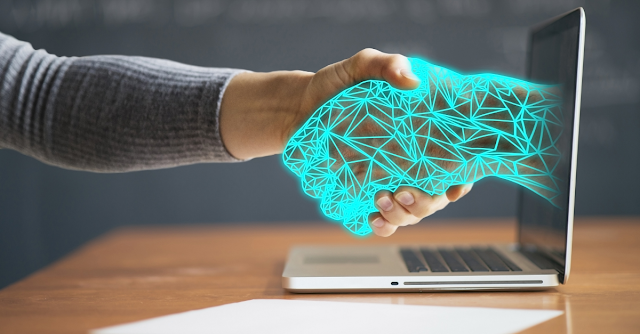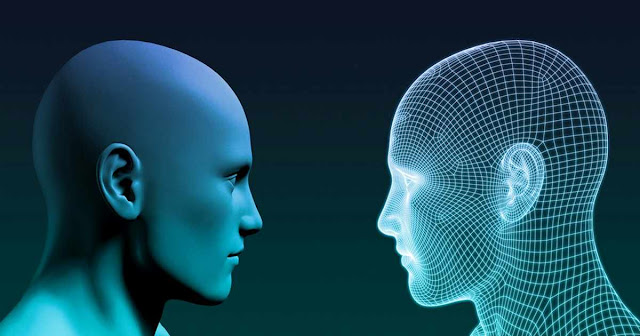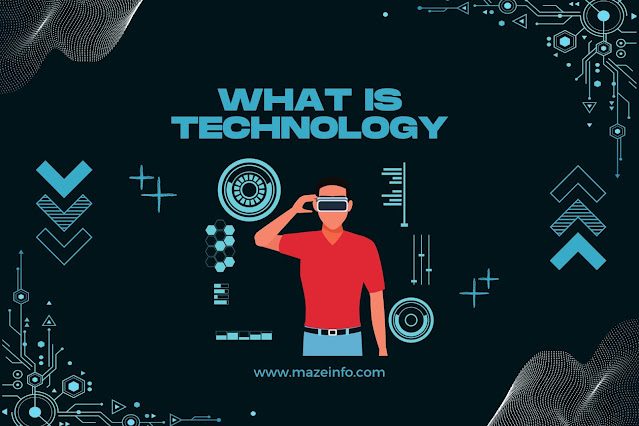In an era where technology is an integral part of our daily lives, it’s paramount to unravel the essence of this pervasive force. From the simplest tools to the most complex systems, technology has been the driving force behind human progress. In this exploration, we delve into the fundamental question: What is technology? Beyond the devices we hold in our hands or the networks that connect us globally, there’s a deeper meaning to be uncovered. Join us as we embark on a journey to understand the essence of innovation and the transformative power of technology.
Defining Technology
Technology is the artful fusion of human imagination and innovation, distilled into tangible tools, systems, and methods. It represents the bridge between human potential and practical solutions, weaving together creativity, science, and engineering prowess. At its essence, technology is the alchemy that transforms abstract ideas into concrete mechanisms, empowering us to overcome challenges, unlock new possibilities, and navigate the ever-evolving landscape of progress.
The Evolutionary Tapestry
The journey of technology spans millennia, weaving a rich tapestry of innovations and discoveries that have shaped human civilization. Here’s a glimpse at some key milestones across various periods:
Ancient Times
- Wheel (circa 3500 BC): Fundamental to transportation, the wheel revolutionized mobility and later led to inventions like pulleys and gears.
- Agricultural Tools (circa 8000–5000 BC): Invention of tools for farming and irrigation transformed societies from nomadic to settled communities.
Classical Era
- Writing Systems (circa 3200 BC): From cuneiform in Mesopotamia to hieroglyphs in Egypt, writing systems emerged, enabling record-keeping and communication.
- Greek Mathematics and Philosophy (6th–3rd century BC): Pioneering advancements in mathematics by scholars like Euclid and Archimedes laid foundations for modern science.
Middle Ages
- Printing Press (15th century): Johannes Gutenberg’s invention revolutionized the spread of knowledge and facilitated the mass production of books.
- Maritime Exploration (15th–17th century): Advancements in navigation led to global exploration and the exchange of goods, ideas, and cultures.
Industrial Revolution
- Steam Engine (18th century): James Watt’s steam engine powered factories, transportation, and spurred industrialization.
- Telegraph (19th century): Invention of telegraphy facilitated rapid communication across vast distances, transforming information exchange.
20th Century
- Electricity and Light Bulb (late 19th century): Inventions by Thomas Edison and others brought about widespread electrification, transforming daily life.
- Computers and Internet (20th century): From early calculating machines to the internet, advancements in computing revolutionized communication and information access.
Contemporary Innovations
- Smartphones and Mobile Technology (21st century): Miniaturization of computing power and connectivity brought powerful devices into the hands of billions, reshaping how we interact with information.
- Artificial Intelligence and Machine Learning: Rapid advancements in AI have transformed industries like healthcare, finance, and transportation.
Cutting-Edge Innovations (ongoing)
- Blockchain Technology: Providing decentralized, secure ledgers, it’s revolutionizing finance and various other industries.
- Quantum Computing: Pioneering a new era of computing with the potential to solve complex problems exponentially faster than classical computers.
Each era’s advancements built upon preceding discoveries, creating a complex web of technological progress that continues to shape our world today.
Also, Read More: What Is A Baby Horse Called?
Technology as a Catalyst for Change

Societal Transformations
- Communication Revolution: Technologies like the internet, social media platforms, and mobile devices have interconnected the world, enabling instant communication and collaboration globally.
- Healthcare Advancements: From advanced medical imaging to telemedicine, technology has improved healthcare accessibility, diagnostics, and treatment, especially in remote areas.
- Education Accessibility: Online learning platforms and digital resources have democratized education, offering learning opportunities to people worldwide.
- Urbanization and Infrastructure: Technological advancements in transportation, energy, and construction have facilitated urban development and infrastructure improvements.
Cultural Shifts
- Globalization and Cultural Exchange: Digital media and the internet have allowed for the rapid spread of cultural ideas, trends, and art forms across borders.
- Entertainment Industry: Streaming services, gaming, and virtual reality have revolutionized entertainment experiences, shaping cultural preferences and consumption habits.
- Preservation of Culture: Technology aids in preserving languages, traditions, and historical artifacts through digital archives and virtual museums.
Economic Transformations
- Automation and Industry 4.0: Robotics, AI, and automation have transformed industries, enhancing productivity and efficiency but also impacting employment landscapes.
- E-commerce and Digital Markets: Online marketplaces and digital payment systems have revolutionized commerce, changing how businesses operate and consumers shop.
- Gig Economy and Remote Work: Technology has enabled remote work opportunities and the growth of the gig economy, altering traditional work structures and employment patterns.
Examples of Influence
- Smart Cities: Integration of technology into urban infrastructure for efficient energy use, transportation systems, and public services.
- Genomics and Personalized Medicine: Advancements in DNA sequencing and analysis have paved the way for personalized treatments and precision medicine.
- Renewable Energy Technologies: Solar, wind, and other clean energy technologies are reshaping energy production and consumption patterns.
In essence, technology has not only reshaped the way we live, communicate, and work but has also been a powerful force in driving societal, cultural, and economic changes, often blurring boundaries and creating new opportunities while posing challenges that require careful navigation.
Diversity of Technological Fields

The technological landscape is incredibly diverse, encompassing a wide range of fields that contribute to innovation and progress in various ways. Here’s a brief overview of some key technological domains and how each contributes to the overall landscape of innovation:
Information Technology (IT)
IT, or Information Technology, encompasses computers, networks, and digital tools that manage and exchange information. It’s the backbone of modern tech, enabling connectivity, efficiency, and innovation across industries.
Biotechnology
Biotechnology utilizes living organisms and biological systems to create products and solutions. It spans industries like healthcare and agriculture, driving advancements such as genetic engineering and drug development.
Nanotechnology
Nanotechnology manipulates materials at tiny scales to create innovative products and tools, impacting fields from medicine to electronics by harnessing unique properties at the nanoscale.
Robotics
Robotics revolves around creating and utilizing robots to autonomously or collaboratively carry out tasks. It drives automation in industries, aids space and underwater exploration, and develops assistive healthcare technologies, enhancing efficiency and capabilities in various domains.
Renewable Energy
Renewable energy taps into sustainable sources like solar, wind, and hydro power. It addresses environmental issues, lessens reliance on fossil fuels, and drives the creation of a more sustainable energy framework through technological advancements.
Aerospace and Aeronautics
Aerospace and aeronautical engineering focus on crafting aircraft and spacecraft. Their innovations power aviation, satellite tech, and space exploration, enhancing propulsion, materials, and navigation systems for both air and space travel.
Materials Science
Materials science is dedicated to studying and creating materials with tailored properties for diverse applications. This field drives innovation in electronics, construction, healthcare, and transportation, yielding materials that are stronger, lighter, and more durable.
Artificial Intelligence (AI) and Machine Learning (ML)
AI and ML craft algorithms enabling machines to learn and execute tasks sans explicit programming. Their impact lies in automating processes, predictive analysis, natural language processing, and decision-making, revolutionizing industries.
Cybersecurity
Cybersecurity shields systems and data from unauthorized access. Constant advancements in this field are essential to safeguard digital assets and preserve information integrity in our interconnected world.
Telecommunications
Telecommunications is the transmission of information over long distances, including technologies like telephony, radio, and internet communication. Ongoing innovations in this field result in faster and more reliable communication systems, fostering global connectivity and the evolution of smart cities.
Human Ingenuity and Creativity

Human creativity and ingenuity have played a pivotal role in the development of technology throughout history. Innovations often arise in response to challenges, serving as catalysts for progress and pushing the boundaries of what is possible. Here are several instances that highlight the close relationship between human ingenuity and technological advancement:
The Industrial Revolution
In the 18th and 19th centuries, the Industrial Revolution marked a transformative period in human history. Innovations such as the steam engine, spinning jenny, and power loom revolutionized manufacturing processes. These inventions were born out of the need to address the challenges posed by manual labor limitations and increased demand for goods.
Space Race and Moon Landing
The mid-20th century saw the United States and the Soviet Union engaged in the Space Race. The quest to reach the moon was driven by political and ideological competition. The innovation spurred during this period led to the development of technologies like integrated circuits, satellite communication, and materials science breakthroughs, which have since become integral to modern life.
Medical Advancements
Human health challenges have consistently driven innovation in medical technology. The development of antibiotics, vaccines, and medical imaging technologies has greatly improved healthcare outcomes. For example, the discovery of penicillin by Alexander Fleming revolutionized medicine, saving countless lives and inspiring the development of other antibiotics.
Information Age and the Internet
The late 20th century witnessed the rapid development of the Information Age. The creation of the internet and the subsequent technological advancements in communication, computing, and information storage were responses to the challenge of improving global connectivity and access to information. This has transformed how people communicate, work, and access knowledge.
Renewable Energy Solutions
The need for sustainable energy sources in the face of environmental challenges has driven innovation in renewable energy technologies. Solar panels, wind turbines, and energy storage solutions have emerged as creative responses to the demand for cleaner alternatives to traditional fossil fuels.
Artificial Intelligence (AI)
The quest to replicate human intelligence has led to the development of artificial intelligence. Innovations in machine learning, natural language processing, and robotics are reshaping industries and daily life. AI is a testament to human creativity, pushing the boundaries of what machines can achieve.
Pandemic Response and Vaccine Development
The COVID-19 pandemic prompted an unprecedented global response, with scientists and researchers collaborating to develop vaccines in record time. This showcased the power of human ingenuity in the face of a pressing global challenge, demonstrating the ability to adapt and innovate to address urgent needs.
In each of these instances, human creativity has been a driving force behind technological progress. Challenges have served as catalysts, sparking the imagination and innovation needed to overcome obstacles and propel society forward. As technology continues to evolve, the role of human ingenuity remains central to shaping the future and finding solutions to the complex problems of our time.
Challenges and Ethical Considerations
Here’s a breakdown of challenges and ethical considerations in technological advancement presented in a table format:
| Challenges | Ethical Considerations |
| Privacy and Data Security | Protection of personal data, safeguarding against breaches |
| Automation and Job Displacement | Mitigating economic impact through retraining and education |
| Ethical AI and Bias | Addressing bias in algorithms, ensuring fairness and transparency |
| Ethical Use of Emerging Technologies | Establishing ethical guidelines and regulatory frameworks |
| Environmental Impact | Developing eco-friendly technologies, reducing electronic waste |
| Ethical Implications of Big Data and Algorithms | Ensuring transparency, fairness, and accountability |
Looking Ahead
The future of technology will see transformative shifts driven by emerging advancements:
- AI Evolution: Sophisticated and ethical AI systems will revolutionize industries and decision-making.
- Extended Reality (XR): AR, VR, and MR will blur physical and digital realities, impacting entertainment and practical sectors.
- IoT Expansion: Interconnected ecosystems will streamline daily life in smart homes, cities, and industries.
- Quantum Computing: Breakthroughs in quantum hardware and algorithms will tackle complex problems.
- Biotech and Health Innovations: Gene editing and personalized medicine will reshape healthcare.
- Sustainable Technologies: Innovations in renewables, carbon capture, and eco-materials will address climate concerns.
- Ethical Regulations: Robust guidelines for data privacy, AI ethics, and responsible innovation will be vital.
- Space Exploration: Advancements may lead to significant developments in space exploration and commercialization.
Balancing innovation with ethical responsibility will be pivotal for these technologies to serve humanity’s best interests.
Conclusion
In our journey through the intricacies of technology, we reveal more than a mere assortment of gadgets. It is a testament to human innovation, creativity, and an unwavering pursuit of progress. Join us in exploring the multifaceted world of technology—a force that has profoundly shaped the past, continues to influence the present, and holds the promise of shaping the future of our civilization. As we navigate this evolving landscape, let us embrace the opportunities and responsibilities that come with harnessing the power of technology for the betterment of humanity.
Frequently Asked Questions(FAQs)
Q: Who First Defined Technology?
Ans: The concept of technology doesn’t have a single originator. The term has roots in ancient Greek philosophy, with Aristotle discussing systematic knowledge and skills. Ernst Kapp in the 19th century contributed to modern understandings. The definition of technology has evolved over time through the insights of various thinkers.
Q: Who is father of technology?
Ans: There isn’t a single person known as the “father of technology.” The development of technology is a collective and evolutionary process, shaped by contributions from various individuals across different cultures and time periods. Notable figures, such as inventors, engineers, and philosophers, have played crucial roles in advancing technology, but attributing its entirety to a single person is not accurate.
Q: Who invented AI?
Ans: Artificial Intelligence (AI) does not have a single inventor; rather, it has evolved over time with contributions from various researchers and scientists. The term “artificial intelligence” was coined in 1956 at a workshop at Dartmouth College. Some key figures in the early development of AI include Alan Turing, John McCarthy, Marvin Minsky, and Herbert Simon. They made foundational contributions to the field, but AI’s evolution has been a collaborative effort with numerous researchers and breakthroughs over the years.
Q: What is the age of technology?
Ans: The “age of technology” refers to the current era, starting from the late 20th century to the present, marked by widespread use and advancements in technology that profoundly impact various aspects of human life.
Q: What are the 4 ages of technology?
Ans:
- Pre-Mechanical Age: 3000 BC to 1450 AD
- Mechanical Age: 1450 to 1840
- Electromechanical Age: 1840 to 1940
- Electronic Age: 1940 to Present



